|
|
|
|
|
|
 |
| INVITED |
|
 |
| . |
|
|
Antonio Agresti
Università degli Studi di Roma “Tor Vergata”, Italy
Invited – Plenary Session
Antonio Agresti is an Assistant Professor at the Department of Electronic Engineering at the University of Rome Tor Vergata since 2019. His research activity mainly involves the design, engineering, fabrication, and electrical/spectroscopic characterization of hybrid and organic solar cells, and the use of graphene and transition metal dichalcogenides and emerging two-dimensional materials such as MXenes for perovskite solar cells, tandem devices, large-area modules, and panels. He has authored/coauthored more than 50 publications and has participated as an invited speaker to several conferences in the renewable energy field. He is currently the deputy leader of Horizon 2020 Spearhead 5—Graphene Core 3 project.
|
|
|
|
|
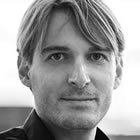 |
| INVITED |
|
 |
| . |
|
|
Andrea Alu
CUNY, USA
Invited – Plenary Session
Alù, an engineer and photonics researcher, is best known for his breakthroughs in invisibility cloaking, or making objects transparent to incoming microwave signals. He was previously the Temple Foundation Endowed Professor #3 in the Cockrell School of Engineering at the University of Texas, Austin. He was also a member of the Cockrell School’s Wireless Networking and Communications Group and the head of the Metamaterials and Plasmonic Research Laboratory. He holds more than a dozen patents and patent applications and has co-authored more than 500 contributions to scientific literature. He is a recent recipient of the Alan T. Waterman Award (2015) from the National Science Foundation — one of the top prizes for scientists and engineers in the United States.
|
|
|
|
|
 |
| INVITED |
|
 |
| . |
|
|
Claudia Backes
University of Kassel, Germany
Invited – Plenary Session
Claudia is a chemist by training and has received her Ph.D with honors in 2011 from the University of Erlangen, Germany. After some time as deputy executive director in the Erlangen Cluster of Excellence “Engineering of Advanced Materials” Claudia received a fellowship grant from the German Research Foundation (DFG) in 2012 and moved to Jonathan Coleman’s groups at Trinity College Dublin, Ireland. In 2015, she returned to Germany and started her independent research at the Chair of Applied Physical Chemistry at Heidelberg University funded through the prestigious Emmy Noether funding from the German Research Foundation from 2016. In 10/2021, she was appointed Chair Professor of Physical Chemistry of Nanomaterials at Kassel University. Claudia’s research interests are in liquid exfoliation, nanosheet size control and size-dependent properties, chemical modification and production of composites and hybrid structures.
|
|
|
|
|
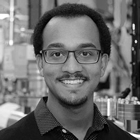 |
| WORKSHOP 1 |
|
 |
| . |
|
|
Kwabena Bediako
University of California Berkeley, USA
Invited – Workshop 1: Large scale growth of 2DM and applications
Kwabena was born in Ghana, West Africa. He moved to the US in 2004 for his undergraduate studies in Chemistry at Calvin College, MI, graduating with honors in 2008. After a year working at UOP Honeywell in IL where he researched new catalysts for the petrochemical and gas processing industries, he traveled from the Midwest to the East Coast to begin his graduate studies in Inorganic Chemistry with Prof. Daniel Nocera at MIT (and later Harvard University). His graduate research focused on structural and mechanistic studies of water splitting electrocatalysis at cobalt and nickel compounds. After receiving his Ph.D. in 2015 from Harvard University, Kwabena began postdoctoral work in Prof. Philip Kim's group in the Department of Physics at Harvard, where he studied ion intercalation and quantum transport in 2D van der Waals heterostructures. In July 2018, Kwabena joined the faculty of the UC Berkeley Department of Chemistry.
|
|
|
|
|
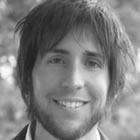 |
| INVITED |
|
 |
| . |
|
|
Sebastiano Bellani
BeDimensional, Italy
Invited – Plenary Session
Sebastiano Bellani is researcher of BeDimensional Spa. He received his Ph.D. from Politecnico di Milano, while working at Instituto Italiano di Tecnologia. Here, he investigated solid/liquid interfaces in organic semiconductor water-gated organic field-effect transistors, hybrid organic-inorganic photoelectrochemical cells and biopolymer-based devices for optical cellular stimulation. Currently, he is participating at the European Commission's Future and Emerging Technology Graphene Flagship. He is deputy leader of Graphene Flagship's Solar Farm Spearhead Project. His current studies are focusing on chemical-physical, spectroscopic and photoelectrochemical characterizations of solution-processed two-dimensional materials and their energy-related applications, including photovoltaics, (photo)electrocatalysis and energy storage systems.
|
|
|
|
|
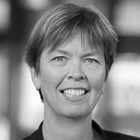 |
| INVITED |
|
 |
| . |
|
|
Ageeth Bol
Eindhoven University of Technology, The Netherlands
Invited – Plenary Session
Ageeth Bol received her MSc and PhD in Chemistry from Utrecht University. After obtaining her PhD in 2001 she worked for Philips Electronics and at the IBM TJ Watson Research Center in the USA. In 2011 she joined TU/e. In 2012, Ageeth received a prestigious VIDI grant from the NWO (Netherlands Organization for Scientific Research) and in 2014 she was awarded a Consolidator Grant by the ERC (European Research Council).
|
|
|
|
|
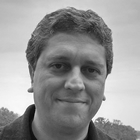 |
| WORKSHOP 3 |
|
 |
| . |
|
|
Luiz Gustavo Cancado
UFMG, Brazil
Invited – Workshop 3: Theory of 2D Materials and Devices Simulation
Luiz Gustavo Cançado: PhD in Physics and Associate Professor at the Physics Departament of the Federal University of Minas Gerais, UFMG, Brazil. Materials Science researcher focused on the development and characterization of nanomaterials by means of optical spectroscopy and atomic microscopy (AFM), with strong emphasis in Raman spectroscopy combined with near-field optics (SNOM, TERS).
|
|
|
|
|
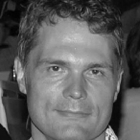 |
| INVITED |
|
 |
| . |
|
|
Guillaume Cassabois
Université Montpellier, France
Invited – Plenary Session
Guillaume Cassabois is Professor at Montpellier University (France). His research activities deal with optical spectroscopy in semiconductor nanostructures for innovative applications in materials sciences and quantum technologies. Research on hexagonal boron nitride is performed in Montpellier by means of the deep-UV spectroscopy platform setup in his group, which enables reflectivity, cw- and time-resolved photoluminescence and scanning confocal cryomicroscopy for hyperspectral imaging in the deep-UV
|
|
|
|
|
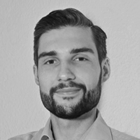 |
| INVITED |
|
 |
| . |
|
|
Piotr Cegielski
AMO GmbH, Germany
Invited – Plenary Session
Piotr Cegielski is a senior scientist at AMO GmbH. He is active in the field of silicon photonics with focus on integration of light sources into silicon (nitride) photonic circuits, especially using halide perovskites. He received his joint Master Degree in Nanotechnology from KU Leuven (Belgium) and Chalmers University of Technology in Sweden in 2015. Afterwards he joined AMO GmbH as a Marie Skłodowska-Curie Early Stage Researcher and received his Ph.D. degree from RWTH Aachen University in 2019.
|
|
|
|
|
 |
| KEYNOTE |
|
 |
| . |
|
|
Stefaan De Wolf
KAUST, Saudi Arabia
Keynote – Plenary Session
Stefaan De Wolf received his Ph.D. degree in 2005 from the Katholieke Universiteit Leuven in Belgium, during which time he was also affiliated with imec in Belgium, working on crystalline silicon solar cells. From 2005 to 2008, he was with the National Institute of Advanced Industrial Science and Technology (AIST), Tsukuba, Japan. In 2008, he joined the Photovoltaics and Thin-Film Electronics Laboratory, Ecole Polytechnique Federale de Lausanne (EPFL), Neuchatel, Switzerland, as a team leader working on high-efficiency solar cells. Since September 2016 he is an associate professor at the King Abdullah University of Science and Technology (KAUST) in Saudi Arabia, working on high-efficiency silicon and perovskite solar cells, and combinations thereof.
|
|
|
|
|
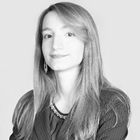 |
| WORKSHOP 5 |
|
 |
| . |
|
|
Lucia Gemma Delogu
University of Padua, Italy
Invited – Workshop 5: Advances in hBN growth, characterization and device integration
Lucia Gemma Delogu, Ph.D., is the head of the ImmuneNano-Lab at the Department of Biomedical Sciences of the University of Padua (UNIPD, Padua, Italy) www.delogulab.eu. After acquiring her experience in Immunology and Material Science at the University of Southern California (Los Angeles, USA) and at Sanford-Burnham Institute (San Diego, USA), she served as Assistant Professor at the University of Sassari (Italy) and as Visiting Professor at the Technische Universität Dresden (TUD; Dresden, Germany). Dr. Delogu has been the Scientific Coordinator of two interdisciplinary EU projects, under HORIZON2020, on nanomedicine and immune interactions of nanomaterials. In this field, she has received several awards, including the “Marie S. Curie Individual Fellow”, the “200 Young Best Talents of Italy 2011” from the Italian Ministry of Youth, and “Bedside to Bench & Back Award” from the National Institutes of Health, USA. Since 2020, Dr. Delogu is in charge of the Italian chapter and a member of the road map working group of the Advanced Material Global Pandemic & Future Preparedness Taskforce (AMPT) www.amptnetwork.com.She introduced the “NanoImmunity-by-design” concept for the design of nanomaterials based not solely on their physicochemical characteristics but also on their immunomodulatory properties.She pioneered the use of systems immunology approach by high-dimensional single-cell strategies in the context of nanomaterial applications.
|
|
|
|
|
 |
| KEYNOTE |
|
 |
| . |
|
|
Marija Drndic
University of Pennsylvania, USA
Keynote – Plenary Session
Marija Drndic is a Fay R. and Eugene L. Langberg Professor in the Department of Physics and Astronomy at the University of Pennsylvania. She received her A.B., A.M. and Ph.D. from Harvard University in the lab of Prof. Robert Westervelt working on atomic chips, and M.Phil. from the University of Cambridge in the lab of Prof. Michael Pepper, working on coupled electron-hole gases in semiconductors. After her Ph.D., she has held a position as a Pappalardo Fellow at MIT working on cold atom physics as well as semiconductor nanocrystals. She is a founder of Goeppert LLC, based in the Pennovation Center at the University of Pennsylvania. She has worked in several fields of experimental physics, including work on dark matter detection, cold atom manipulation, two-dimensional electron gases, semiconductor nanostructures and nanocrystals, 2D materials, and single molecule detection and analysis.
|
|
|
|
|
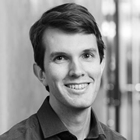 |
| INDUSTRIAL FORUM |
|
 |
| . |
|
|
Johan Ek Weis
SIO Grafen, Sweden
Invited - Industrial Forum
After having been an academic researcher concentrating on graphene and carbon nanotubes for 10 years, Johan shifted focus 5 years ago and is now focusing on helping the industry use graphene to develop new products. Johan works both directly with companies on specific projects developing products, and more strategically with the Swedish national innovation programme SIO Grafen.
|
|
|
|
|
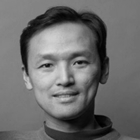 |
| KEYNOTE |
|
 |
| . |
|
|
Kin Fai Mak
Cornell University, USA
Keynote – Plenary Session
I received my PhD in physics from Columbia University working with Prof. Tony Heinz on optical spectroscopy of 2D materials such as graphene and MoS2. As a postdoc, I worked with Prof. Paul McEuen and Prof. Jiwoong Park at Cornell on the optoelectronic properties of 2D semiconductors. We have demonstrated the valley Hall effect in MoS2 transistors using optoelectronics methods. I started my faculty position at Penn State University in 2014 and moved back to Cornell in 2018. I am now an associate professor of physics and of applied and engineering physics. I am interested in many topics in condensed matter physics. My current research interests include magnetism, superconductivity, strong correlation physics and exciton physics in 2D materials and their heterostructures.
|
|
|
|
|
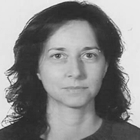 |
| WORKSHOP 6 |
|
 |
| . |
|
|
Laura Fumagalli
University of Manchester, UK
Invited – Workshop 6: Advanced Characterization of 2DM and heterostructures
Laura Fumagalli is Reader in Condensed Matter Physics at the Department of Physics & Astronomy and staff researcher of the National Graphene Institute. She received her M.S. in Electronic Engineering in 2002 (Polytechnic University of Milan - Italy and École Superior d’Electricité - France) and her PhD in Information Technology in 2006 with a doctoral thesis on low-noise wide-bandwidth amplifiers at the Department of Electronics of Polytechnic University of Milan. She then worked at the Department of Electronics of the University of Barcelona (Spain) as post-doctoral researcher (2006-2010) and lecturer (2010-2014), developing novel instrumentation and methods that measure the dielectric properties of matter on the atomic scale using a scanning probe, referred to as Scanning Dielectric Microscopy (SDM). She joined the Condensed Matter Physics group of the University of Manchester (UK) in 2015. She was awarded the Ramon y Cajal fellowship by the Spanish Ministry of Education and Science in 2014 and the ERC Consolidator grant "Two-dimensional liquid-cell dielectric microscopy (Liquid2DM)" by the European Research Council in 2018. She currently sits in the scanning probe microscopy committee of the Royal Microscopical Society. Her research focuses on the study of electric and dielectric properties of bio and non-bio materials on the nanoscale.
|
|
|
|
|
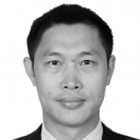 |
| INDUSTRIAL FORUM |
|
 |
| . |
|
|
Chao Gao
GaoxiTech/Zhejiang University, China
Invited - Industrial Forum
Prof. Chao Gao joined the Department of Polymer Science and Engineering, Zhejiang University, and was promoted as a full Professor in 2008. In 2001, he was a faculty member in SJTU, and Associate Professor in 2002. Since Nov. 2003, he worked with Prof. Sir Harry Kroto as a visiting scholar and postdoc research fellow in the University of Sussex, UK, and then moved to Prof. Axel H. E. Müller’s group at Bayreuth University, Germany in July 2005 as an Alexander von Humboldt research fellow.
|
|
|
|
|
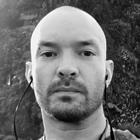 |
| INVITED |
|
 |
| . |
|
|
Roman Gorbachev
The University of Manchester, UK
Invited – Plenary Session
Roman is a Professor of Condensed Matter Physics at University of Manchester. He has obtained PhD in 2009 at the University of Exeter, UK. His research area is optoelectronic properties of 2D material heterostructures with strong emphasis on fabrication of nanoscale low-dimensional devices. He leads ERC consolidator project “Quantum Nanomaterials by Twistronics” and has been named “Highly Cited Researcher” for the last three consecutive years (ranking in the top 1% by citations in the field of Physics by Web of Science).
|
|
|
|
|
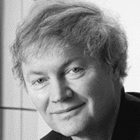 |
| PLENARY |
|
 |
| . |
|
|
Michael Graetzel
EPFL, Switzerland
Plenary Talk
Professor of Physical Chemistry at the Ecole polytechnique fédérale de Lausanne (EPFL) Michael Graetzel, PhD, directs there the Laboratory of Photonics and Interfaces. He pioneered research on energy and electron transfer reactions in mesoscopic systems and their use to generate electricity and fuels from sunlight. He invented mesoscopic injection solar cells, one key embodiment of which is the dye-sensitized solar cell (DSC). DSCs are meanwhile commercially produced at the multi-MW-scale and created a number of new applications in particular as lightweight power supplies for portable electronic devices and in building integrated photovoltaics. They engendered perovskite solar cells (PSCs) which turned into the most exciting break-through in the history of photovoltaics. He received a number of prestigious awards, of which the most recent ones include the RusNANO Prize, the Zewail Prize in Molecular Science, the Global Energy Prize, the Millennium Technology Grand Prize, the Marcel Benoist Prize, the King Faisal International Science Prize, the Einstein World Award of Science and the Balzan Prize. He is a Fellow of several learned societies and holds eleven honorary doctor’s degrees from European and Asian Universities. His over 1500 publications have received some 220’000 citations with an h-factor of 218 (SI-Web of Science) demonstrating the strong impact of his scientific work.
|
|
|
|
|
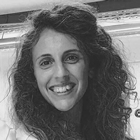 |
| KEYNOTE |
|
 |
| . |
|
|
Giulia Grancini
Università degli studi di Pavia, Italy
Keynote – Plenary Session
|
|
|
|
|
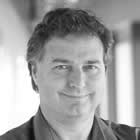 |
| INDUSTRIAL FORUM |
|
 |
| . |
|
|
Gordon Harling
CMC Microsystems, Canada
Invited - Industrial Forum
Gordon Harling received a Bachelor’s degree in Applied Science from the University of Toronto and a Maîtrise en Ingénierie Physique from Polytechnique Montréal. He has worked in Research and Development at large companies such as Mitel, NovAtel, and DALSA. He has been a founder and CEO of several start-up companies including Goal Semiconductor, Elliptic Technologies, and Innotime Technologies.He joined CMC Microsystems in February 2018 as President and CEO.
|
|
|
|
|
 |
| INDUSTRIAL FORUM |
|
 |
| . |
|
|
Kari Hjelt
Chalmers Industrial Technic, Sweden
Invited - Industrial Forum
Kari Hjelt, Head of Innovation, Graphene Flagship PhD (Eng.), MBA Kari Hjelt has extensive experience in ICT and over 15 years career in corporate venturing and research. At Nokia he established a number of ventures and two research laboratories. His last tenure at Nokia was Director, Research Innovations. Since then he has been a co-founder and advisor to several high-tech SMEs. He currently works in Graphene Flagship as the Head of Innovation and is a member of the Management Panel and the Executive Board. He received his PhD in 1997 with “Photoluminescence and growth of compound semiconductors” from Helsinki University of Technology. He earned his Executive MBA from London Business School in 2010. Kari holds 10 patents and has published 40+ reviewed publications.
|
|
|
|
|
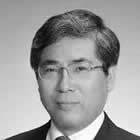 |
| INVITED |
|
 |
| . |
|
|
Yoshihiro Iwasa
University of Tokyo, Japan
Invited – Plenary Session
Yoshihiro Iwasa received his Ph. D. at The University of Tokyo in 1986. After a few years’ experiences of research associate at University of Tokyo and visiting scientist at AT&T Bell laboratories, he became an associate professor at the Japan Advanced Institute of Science and Technology in 1994. In 2001, he was appointed as a full professor at the Institute for Materials Research at the Tohoku University, and then moved to the current position at Department of Applied Physics, University of Tokyo in 2010. He has been concurrently a team leader at RIKEN Center for Emergent Matter Sciece. His research interest is 2D materials and their electronic phase control. In particular, his group has developed a new type of electrochemical transistor, electric double layer transistor, with which he has realized a variety of electrical phase control that includes electric field induced superconductivity
|
|
|
|
|
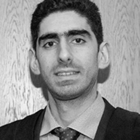 |
| INVITED |
|
 |
| . |
|
|
George Kakavelakis
University of Cambridge / CGC, UK
Invited – Plenary Session
Dr George Kakavelakis obtained his PhD degree as an IKY/Siemens Scholar of Excellence from the Department of Materials Science and Technology of the University of Crete, Greece in July 2018. His work was focused on the improvement of performance and stability of solution processed photovoltaics through novel interfacial engineering designs. In September 2018 he took a postdoctoral research associate appointment in the Cambridge Graphene Centre of Cambridge University to develop fully printed carbon electrode based solar photovoltaics. In April 2020 he has been elected Junior Research Fellow under the academic title B1 at Wolfson College of Cambridge University. In September 2021 he joined the Laboratory of Photonics and Interfaces at École polytechnique fédérale de Lausanne as Marie-Sklodowska Curie Individual Fellow.
|
|
|
|
|
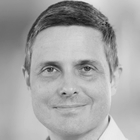 |
| KEYNOTE |
|
 |
| . |
|
|
Andras Kis
EPFL, Switzerland
Keynote – Plenary Session
Andras Kis is an Associate Professor in Electrical Engineering at EPFL, Lausanne. He started his group in 2008 and has been working on 2D materials and atomically thin TMDCs. His interests and span electronic devices, exciton and valley physics in TMDs and material growth. He is also serving as the editor in chief of the Nature partner journal 2D materials and applications. Prior to joining EPFL as faculty, Andras Kis was a postdoctoral researcher at UC Berkeley in the group of Prof. Alex Zettl and has received his Ph.D. in physics from EPFL in the group of Prof. László Forró.2003 and received his MSc in physics from the University of Zagreb, Croatia. His major awards include the Latsis prize in 2004, ERC starting grant in 2009 and ERC consolidator grant in 2015.
|
|
|
|
|
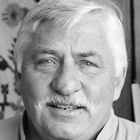 |
| WORKSHOP 2 |
|
 |
| . |
|
|
Wojciech Knap
Université de Montpellier, France
Invited – Workshop 2: Chemistry of 2DM, Medical and Energy Applications
Prof. dr hab. Wojciech Knap obtained his master and PhD degrees from Faculty of Physics – University of Warsaw Poland. His PhD concerned the Terahertz (Far infrared) properties of narrow gap semiconductors HgTe and InSb. After his PhD degree (1985) he obtained the position of permanent assistant professor at the University of Warsaw in the Department of Solid State Physics. In 1987 he moved to France to work as the assistant professor at the University of Montpellier, Grenoble High Magnetic Field Laboratory, Toulouse Pulsed High Magnetic Field Laboratory. In 1992 he obtained a permanent position at French National Centre for Scientific Research – CNRS – Montpellier. He worked as a visiting researcher at joined USA–Japan Rensselaer Polytechnic Institute, Troy NY and Tohoku University Sendai Japan.His main scientific interests and activities are concentrated around far-infrared (Terahertz) properties of semiconductors and, in particular, around basic physics and applications of Terahertz plasma excitations in nanostructures.He is currently the Leader of the International Research Project CENTERA and together with Prof. T. Skotnicki he is leading THz research and development activities within the project.
|
|
|
|
|
 |
| KEYNOTE |
|
 |
| . |
|
|
Shengzhong Liu
Shaanxi Normal University, China
Keynote – Plenary Session
Prof. Shengzhong (Frank) Liu is the team lead for the DNL16 Thin Film Solar Cell group. He is a Professor at Dalian Institute of Chemical Physics, Chinese Academy of Sciences. , he is also a professor at Shaanxi Normal University – one of top 100 universities in China. Dr. Liu received his Ph. D. degree from Northwestern University, Evanston, Illinois, USA in 1992. He then conducted his postdoctoral research at Argonne National Laboratory. He has dedicated his research in thin film photovoltaics since 1998 when he worked for Solarex (later BP Solar). He moved to United Solar Ovonic in 2003 when BP Solar closed its thin film PV business. He has been one of the world pioneers in this field. His major achievements include
|
|
|
|
|
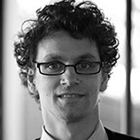 |
| WORKSHOP 2 |
|
 |
| . |
|
|
Daniel Neumaier
AMO / University of Wuppertal, Germany
Invited – Workshop 2: Chemistry of 2DM, Medical and Energy Applications
Daniel Neumaier received the PhD degree in 2009 from the University of Regensburg. He was head of the Graphene-Group at AMO GmbH, a research foundry located in Aachen, Germany, from 2009 until 2020. Since 2020 he is full Professor for Electrical Engineering at the University of Wuppertal and Scientific Advisor at AMO GmbH. Daniel Neumaier has managed several research projects on graphene and related 2D materials. He is currently coordinating the EU FET-Open project ORIGENAL and leading the work-package on Electronic Devices in the EU-Flagship Project Graphene.
|
|
|
|
|
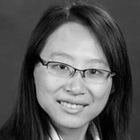 |
| KEYNOTE |
|
 |
| . |
|
|
Wanyi Nie
Los Alamos National Laboratory, USA
Keynote – Plenary Session
Wanyi Nie is a staff scientist at Los Alamos National Laboratory. Her research interests include developing novel semiconductors for onto-electronic devices; understanding the carrier transport properties in perovskite semiconductors. She is currently leading a team developing perovskite based LEDs and radiation detectors.
|
|
|
|
|
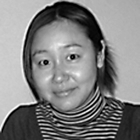 |
| INVITED |
|
 |
| . |
|
|
Hanako Okuno
CEA, France
Invited – Plenary Session
Hanako OKUNO graduated with a Master Degree in Materials Science and engineering from Tokyo Institute of Technology in 1999. She received PhD in Materials Science from Louvain catholic University in Belgium, entitled “Synthesis and characterization of carbon based materials” in 2006. She worked in advanced microscopy to develop quantitative chemical atomic resolution imaging on semiconductor during her post-doc fellows at NIMS in Japan and CEA in France and then joined CEA LITEN in 2009 where she worked on the integration of CNTs in microelectronic device applications. Since 2012, she has been working in Laboratory of advanced electron microscopy in CEA INA, whereas she specializes advanced microscopy for two-dimensional material study using low-voltage aberration corrected TEM techniques.
|
|
|
|
|
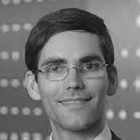 |
| KEYNOTE |
|
 |
| . |
|
|
Tomas Palacios
MIT, USA
Keynote – Plenary Session
Tomás Palacios is a Professor of Electrical Engineering and Computer Science at the Massachusetts Institute of Technology (MIT). He is affiliated with the Department of Electrical Engineering and Computer Science and with the Microsystems Technology Laboratory (MTL). He studied Electronics at the Polytechnic University of Madrid, and he received his MS and PhD degrees in Electrical Engineering from the University of California, Santa Barbara (UCSB) in 2004 and 2006, respectively.
|
|
|
|
|
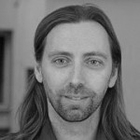 |
| WORKSHOP 2 |
|
 |
| . |
|
|
Emiliano Pallecchi
IEMN-Univ. Lille, France
Invited – Workshop 2: Chemistry of 2DM, Medical and Energy Applications
|
|
|
|
|
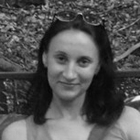 |
| INVITED |
|
 |
| . |
|
|
Hanna Pazniak
University of Duisburg-Essen, Germany
Invited – Plenary Session
Hanna Pazniak is a graduate of Belarusian State Technological University in inorganic chemistry. Her research interests are layered materials with focus on transition metal carbides/nitrides (MAX phases) and their transition to their two-dimensional counterparts MXenes. She is an expert in high temperature synthesis and development of layered nanoscale systems and their comprehensive characterization by means of Raman, TEM/EELS, XRD, SEM/AFM techniques, as well as their exploitation for applications in perovskite solar cells and gas sensors. Her comprehensive expertise in these fields originates from multiple research projects, in part under her supervision, at TEXAS A&M UNIVERSITY (USA), NATIONAL UNIVERSITY OF SCIENCE AND TECHNOLOGY «MISiS» (Russia), and INSTITUT PPRIME - UNIVERSITE de POITIERS (France). She is currently working as a postdoctoral researcher at University of Duisburg-Essen (Germany).
|
|
|
|
|
 |
| INDUSTRIAL FORUM |
|
 |
| . |
|
|
Andrew J. Pollard
National Physical Laboratory, UK
Invited - Industrial Forum
Andrew Pollard is the Science Area Leader of the Surface Technology Group and leads NPL's research into the structural and chemical characterisation of graphene and related 2D materials, with a focus on enabling industrial commercialisation in this area. This metrology research addresses the actual measurement of 2D materials with a range of surface characterisation techniques, such as Raman spectroscopy and tip-enhanced Raman spectroscopy (TERS), scanning probe microscopies (SPM), scanning electron microscopy (SEM), secondary ion mass spectrometry (SIMS) and X-ray photoelectron spectroscopy (XPS).He is leading international graphene standards within ISO/TC229, including the first published graphene ISO standard on terminology. Andrew is a Visiting Lecturer at the University of Manchester, UK, the co-chair of the VAMAS Technical Working Area 'TWA 41: Graphene and Related 2D Materials' and the recipient of the Royal Society of Chemistry's "2018 Rising Star in Industry Award"
|
|
|
|
|
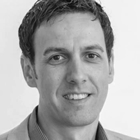 |
| KEYNOTE |
|
 |
| . |
|
|
Eric Pop
Stanford University, USA
Keynote – Plenary Session
Eric Pop is a Professor of Electrical Engineering (EE) and Materials Science & Engineering (by courtesy) at Stanford, where he leads the SystemX Heterogeneous Integration focus area. He was previously on the faculty of UIUC (2007-13) and worked at Intel (2005-07). His research interests are at the intersection of electronics, nanomaterials, and energy. He received his PhD in EE from Stanford and three degrees from MIT (MEng and BS in EE, BS in Physics). His honors include the Presidential Early Career Award (PECASE), Young Investigator Awards from the Navy, Air Force, NSF and DARPA, and several best paper and best poster awards with his students. In 2018, he was named one of the world’s Highly Cited Researchers by Web of Science. He is an Editor of 2D Materials, has served as General Chair of the Device Research Conference, and on program committees of VLSI, IEDM, APS, and MRS conferences. In his spare time he tries to avoid injuries while snowboarding and in a past life he was a DJ at KZSU 90.1 FM, from 2000-04
|
|
|
|
|
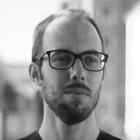 |
| INVITED |
|
 |
| . |
|
|
Ferry Prins
UAM / IFIMAC, Spain
Invited – Plenary Session
Ferry Prins is a tenure-track group leader at the Condensed Matter Physics Center (IFIMAC) at the Universidad Autonoma de Madrid. He obtained an MSc in Chemistry from Leiden University in 2007 and a PhD in Physics from Delft University of Technology in 2011. After postdoctoral stays at Massachusetts Institute of Technology and ETH Zurich, he joined the Universidad Autonoma de Madrid in 2017 where he founded the Photonic Nanomaterials and Devices Laboratory. His lab specialises in the development of Transient Microscopy techniques for the direct visualisation of excited-state transport in nanostructured semiconductors.
|
|
|
|
|
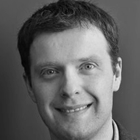 |
| KEYNOTE |
|
 |
| . |
|
|
Barry P. Rand
Princeton University, USA
Keynote – Plenary Session
Barry Rand earned a BE in electrical engineering from The Cooper Union in 2001. Then he received MA and PhD degrees in electrical engineering from Princeton University, in 2003 and 2007, respectively. From 2007 to 2013, he was at imec in Leuven, Belgium, ultimately as a principal scientist, researching the understanding, optimization, and manufacturability of thin-film solar cells. Since 2013, he is in the Department of Electrical Engineering and Andlinger Center for Energy and the Environment at Princeton University, currently as an Associate Professor. Prof. Rand's research interests highlight the border between electrical engineering, materials science, chemistry, and applied physics, covering electronic and optoelectronic thin-films and devices. He has authored approximately 125 refereed journal publications, has 20 issued US patents, and has received the 3M Nontenured Faculty Award (2014), DuPont Young Professor Award (2015), DARPA Young Faculty Award (2015), and ONR Young Investigator Program Award (2016).
|
|
|
|
|
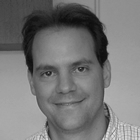 |
| INVITED |
|
 |
| . |
|
|
Alberto Saiani
University of Manchester, UK
Invited – Plenary Session
Prof Alberto Saiani was awarded an European PhD in 1997 by the Université Louis Pasteur, (Strasbourg, France). Following his PhD he was awarded a Fellowship by the Japanese Society for Promotion of Science (JSPS), which allowed him to spend one year as postdoctoral research fellow at Osaka University (Japan). In 1998 he was recruited as postdoctoral research associate at Imperial College in the Chemical Engineering department where he staid two years. In September 2000 he was appointed to a lectureship at the Université Blaise Pascal (Clermont-Ferrand, France) and in September 2002 he was appointed to a lectureship in Molecular Materials in the School of Materials, The University of Manchester. In 2013 he was awarded an EPSRC Fellowship and founded a company dedicated to the commercialisation of the peptide hydrogel technology developed in his group
|
|
|
|
|
 |
| INVITED |
|
 |
| . |
|
|
Danila Saranin
NUST MISIS, Russia
Invited – Plenary Session
|
|
|
|
|
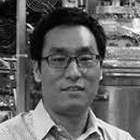 |
| INVITED |
|
 |
| . |
|
|
Byungha Shin
KAIST, Korea
Invited – Plenary Session
Byungha received his BSE in MSE from Seoul National University in 2000, and his M.S. from the University of Michigan in July 2002. His Master's Paper was entitled, "Nanometer-scale Studies of Phase Separation and Clustering in Compound Semiconductor Alloys". He then moved to Harvard University and obtained his PhD in Applied Physics in Jan 2007. From May 2007 to March 2010, he was a post-doc in the department of MSE at Stanford University. From May 2010 to Feb 2013, he worked at IBM T. J. Watson Research Center as s post-doctoral research and a Research Staff Member. He is currently an Assistant Professor in the department of Materials Science and Engineering at Korea Advanced Institute of Science and Technology (KAIST) in Daejeon, Korea.
|
|
|
|
|
 |
| WORKSHOP 2 |
|
 |
| . |
|
|
Klaas-Jan Tielrooij
ICN2, Spain
Invited – Workshop 2: Chemistry of 2DM, Medical and Energy Applications
Klaas-Jan Tielrooij joined the ICN2 in October 2018, starting the ICN2 Ultrafast Dynamics in Nanoscale Systems Group. In July 2018, he was awarded a visiting professorship at the Graduate School of Excellence “Material Science in Mainz” (Germany). Before coming to the ICN2, he was a research fellow at fellow-BIST institute ICFO in Barcelona. He obtained his Ph.D. at the University of Amsterdam (Netherlands) in December 2010. He was awarded an ERC Starting Grant in 2018.
|
|
|
|
|
 |
| WORKSHOP 1 |
|
 |
| . |
|
|
Ke Wang
University of Minnesota, USA
Invited – Workshop 1: Large scale growth of 2DM and applications
Ke Wang obtained his undergraduate degree in Physics from University of Science and Technology of China and his Ph.D. in Physics from Princeton University working with Prof. Jason R. Petta. After his post-doctoral research with Prof. Philip Kim at Harvard University, he joined University of Minnesota as an assistant Professor in Physics in 2018. His current research interests include correlated electrons at the quantum limit and transport properties of novel 2D functional materials and nanostructures. Ke Wang received NSF career award and International Union of Pure and Applied Physics Young Scientist Prize in 2020.
|
|
|
|
|
| |
|
|
|
|
|
|
|
© Phantoms Foundation 2020 |
|
|
|